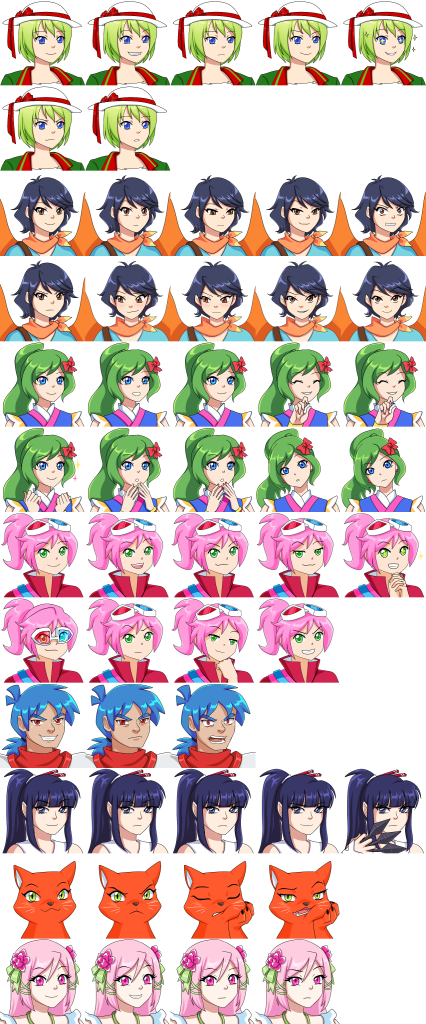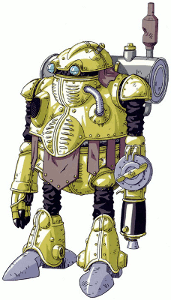As super amazing and ultra fun as designing character outfits was, it might be even more gratifying to see them express themselves. ♥
— Jelly Paladin (@JellyPaladin) February 20, 2015
Let that serve as my introduction to what’s been a whirlwind week of art. :D And it applies not only to characters, but also to pixel art—so first up, because it takes less vertical scrolling, here’s a pixel art preview from Becca!
Tileset I made for @JellyPaladin's game Dreamblazers. Lil seaside cave for slimes! pretty cute eh? #pixelart #gamedev pic.twitter.com/geEPvWsP5Z
— Becca Bair (@TupelosHoney) March 2, 2015
Ah, look at those lovelies! ♥
This is her mockup, not the actual in-game layout of one of the early areas—I need to convert my placeholders to this real tileset, with colliders and all—but it’s a good thing she made it since I see a couple ideas here that I wouldn’t have realized were possible just from looking at the tiles.
This tileset is for the first cave the player will enter (no matter how “out-of-order” they take the first continent, there aren’t any other caves to enter first), so the friendly and warm feel of the color palette sets the tone for the rest of the game. All the beach-related tiles will also show up later on the second continent, the Grand Isle of Lumina—but let’s not get ahead of ourselves. ;P
The inspiration for the rock walls comes mainly from Final Fantasy VI, including the fact that they come in a different color not shown here that will be used for other caves, while the shallow water layer on the floor was inspired by a few areas of Chrono Trigger. That layer animates, as does the deep water on the lower left. The inhabitants are pretty adorable, so there are also some cutesy objects around their living quarters!
The next tileset will be the overworld and I’m gathering the remaining references for those today. =)
Next up: tons of new faces from Flora!
Today’s notes:
* When I have a big enough audience, I’d really love to play a game of “Guess Which Of These Characters You Don’t Fight” with this image. =P Top to bottom are Celty, Evelyn Castillo, Jelia, Jig Starlight, Kelly, Lash, Recca, and Spring.
* Compared to last week’s selection of Ardis, Astrid Crys Alucia, Besarre, and Leaf, these characters have fewer expressions each. This is partly because of their personalities or roles in the story, but also because sometimes I realize only after seeing the exact number of expressions that I asked for that I do need more than expected. Look for almost all of these characters to get 1 or 2 more faces in the coming weeks. Incidentally, the number of faces per character (and especially the current number) doesn’t say much about their story importance; nobody has more screen time than Celty or Recca.
* Random trivia time about Jelia! Her original name in my 2000-2001 documents was Jelly, but that obviously couldn’t stand since Jelly’s now the name of my mascot. Her original incarnation was significantly more colorful, if you can believe that, but even on paper it looked like a pretty disgusting level of non-coordination. =P
* Random trivia time about Jig! She and her brother Tango were always going to have musical names, but going through different music-related terms was quite an ordeal. A lot of the good names were taken by Mega Man—in fact, as I would realize only later, the name Tango was one of them.
Huh. I named a character Tango as a musical name not found in Mega Man, but in GB Mega Man V there's a cat called Tango. Obscure truth!
— Jelly Paladin (@JellyPaladin) May 22, 2014
My original idea was Twist and Tango, the T&T twins. For an inventor like Jig, Twist would have been an interesting name that carried a musical connotation while also implying things like twisting wrenches or turning gears. They would also both be named for dances, just as they are now. Only problem? My Little Pony ruined that for me with a Twist who’s more of a geeky character—the antithesis of Jig. Running through all the names of dances, Jig stood out as a pretty upbeat name that could also be taken as part of a jigsaw puzzle, a fact that Flora picked up on without my even mentioning it since puzzle pieces ended up in her design.
* Random trivia time about Lash! Along with Celty and one other as-of-yet-unrevealed (and undesigned!) character, Lash is one of my oldest surviving characters harkening way back to 1997. Many of my other characters back then were pretty dubious in quality, not to mention being ripoffs of whatever I was playing and watching at the time, but Lash has endured.




